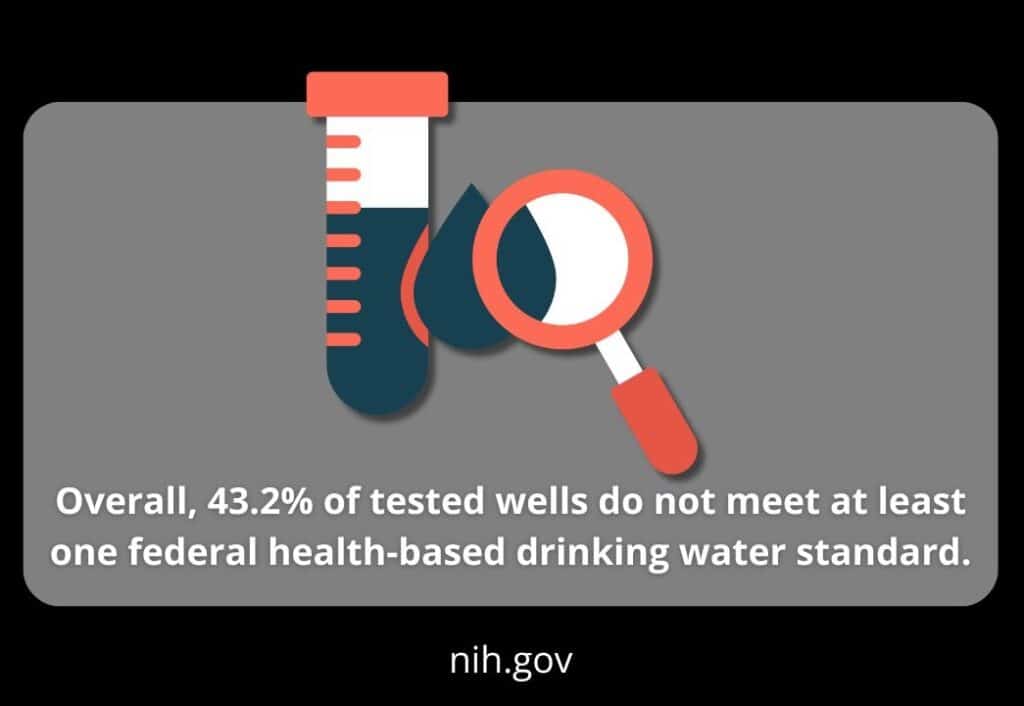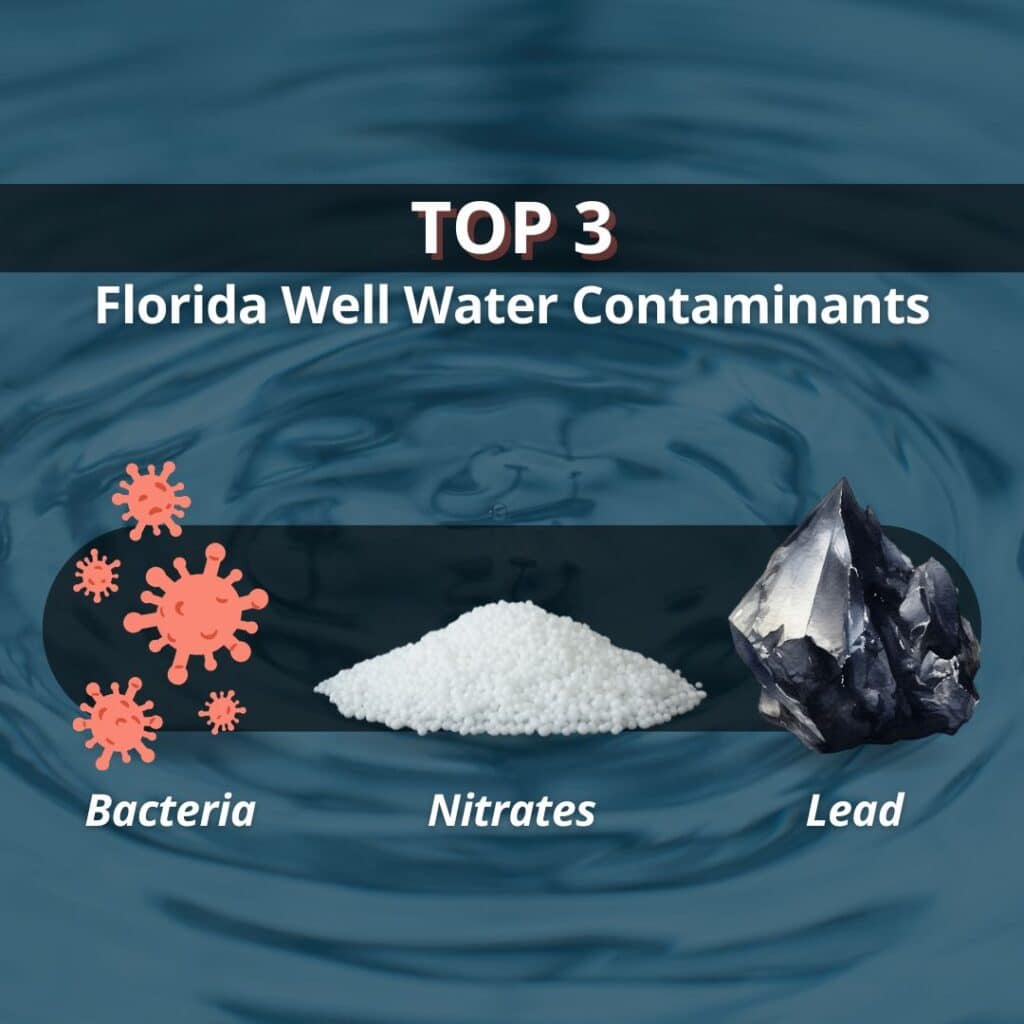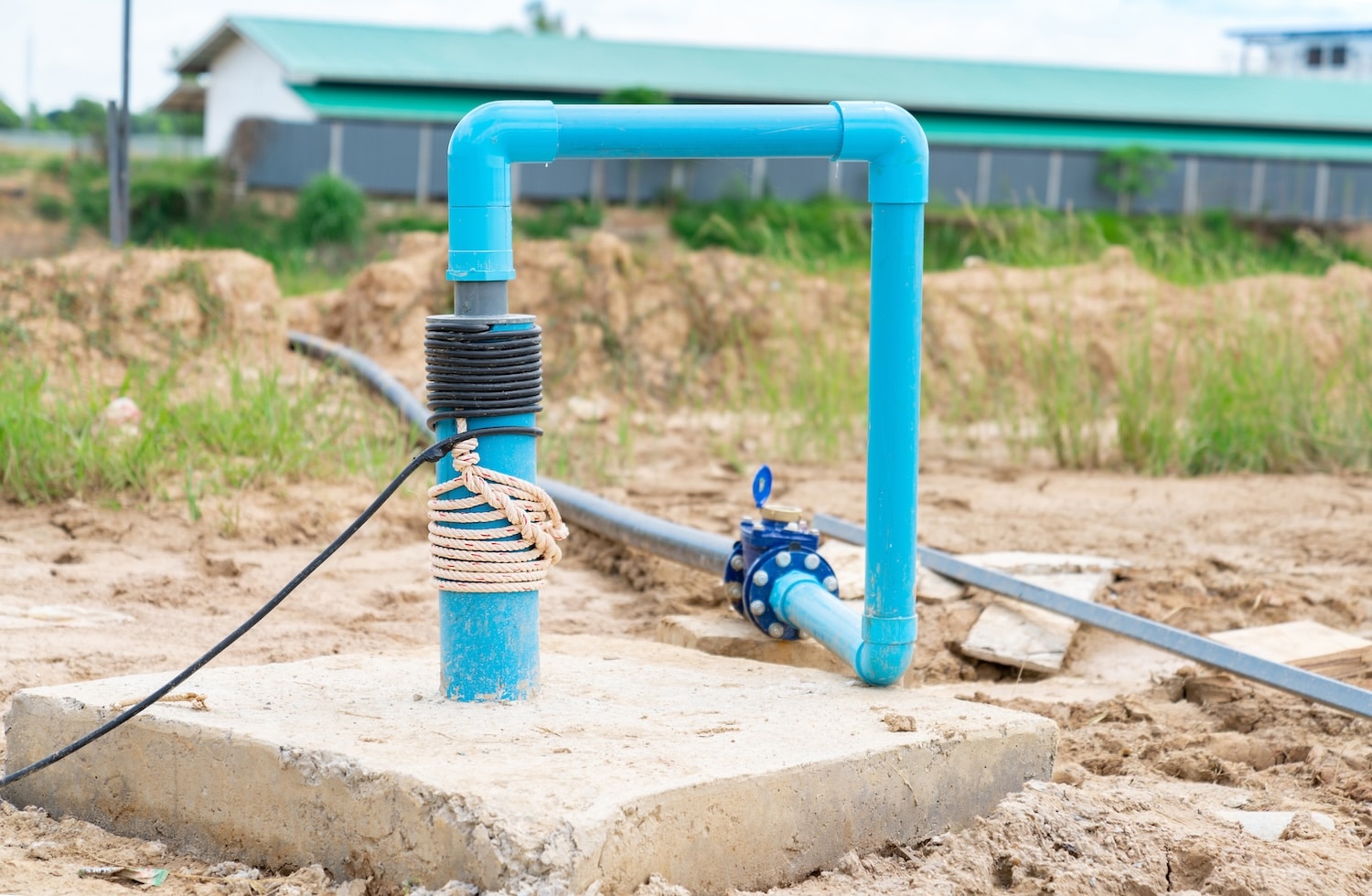Well water is a lifeline for many homeowners, offering a private and reliable source of water. But what’s in that water can be surprising—and not always safe. Ammonia and other common contaminants make their way into a well more often than many think, affecting water quality and posing various risks.
Whether you’re relying on well water daily or considering buying a home with a private well, knowing the common contaminants and how they enter your water supply is the first step to keeping it clean and safe.
Table of Contents
ToggleHow Contaminants Enter Well Water
Contaminants can get into residential well water in several ways. Often, it depends on natural and human activities around the well. Knowing how pollutants reach your water supply is essential for prevention and maintenance.
- Runoff from agriculture and industry: Fertilizers, pesticides, and industrial waste can seep into the ground during rainstorms, making their way into nearby wells. Primarily, runoff is a significant source of ammonia and nitrates.
- Septic systems and wastewater: Poorly maintained or improperly installed septic systems can leak, allowing harmful bacteria like E. coli or chemicals to enter groundwater.
- Natural geological sources: Some contaminants, such as iron, manganese, or lead, come from the soil and rocks surrounding the well. The elements dissolve into water as it flows through underground layers.
- Well construction and maintenance issues: A poorly constructed or damaged well can create openings for contaminants to enter. Cracks in the casing or an improperly sealed wellhead can allow surface water and pollutants inside.
- Stormwater and surface water infiltration: Heavy rains or flooding can wash surface pollutants, including debris and bacteria, into the well. Wells in low-lying areas are especially vulnerable.

Ammonia and Well Water
Ammonia is one of the more common contaminants found in water from private wells. While it occurs naturally, human activities can often increase its levels in groundwater.
Typically, ammonia comes from fertilizers used in agriculture or the decay of organic matter in soil. It can also enter through waste from livestock farms or industrial discharge near water sources.
Although ammonia itself isn’t usually harmful at low levels, it can certainly pose indirect risks. When combined with chlorine in water systems, it forms chloramines, which may reduce water disinfection effectiveness. Ammonia can also contribute to unpleasant tastes or odors, though the contaminant itself is colorless, and often undetectable without proper testing. If you notice changes in taste or smell, or if your well is near agricultural areas, testing is critical.
Regular water testing ensures ammonia levels are monitored and identifies any additional contaminants that might be present. Testing is particularly important if you’re considering purchasing a property with a private well or suspect contamination.
Other Common Contaminants Found in Well Water
Beyond ammonia, private well water can contain a variety of contaminants that pose risks to health, safety, and home maintenance. Becoming familiar with these common culprits is one way to preserve your water quality.
1) Nitrates
Often originating from agricultural fertilizers or septic system leaks, nitrates can be particularly dangerous for infants, potentially leading to a condition known as “blue baby syndrome.” High nitrate levels are a common issue in rural areas with extensive farming activity.
2) Bacteria and Viruses
Harmful microorganisms, such as E. coli or coliform bacteria, can enter well water through animal waste, leaking septic systems, or surface water runoff. These contaminants can cause severe gastrointestinal illnesses and must be addressed promptly.
3) Lead
Lead often enters well water from corroding plumbing systems or fixtures containing lead-based materials. Prolonged exposure to lead-contaminated water can result in serious health issues, particularly for children and pregnant women.
4) Iron and Manganese
Naturally occurring in the earth, these minerals often seep into well water through groundwater movement. While not hazardous, they can stain laundry, clog plumbing, and give water an unpleasant metallic taste.
Each of these contaminants presents unique challenges, but they are detectable and manageable through regular water testing and proper treatment solutions.

How Water Testing Identifies Contaminants
Water testing is the most effective way to ensure your well water is safe, clean, and free from harmful contaminants.
Testing gives a clear picture of what’s in your water and helps you take the necessary steps to address any issues.
- Comprehensive Process: Professional water testing analyzes your well water for a wide range of contaminants, including ammonia, nitrates, bacteria, and metals like lead and iron. This process ensures that even invisible pollutants are identified.
- Tailored Solutions Based on Results: Once testing identifies contaminants, water treatment specialists can recommend targeted solutions, such as filtration systems, water softeners, or chlorination methods, to improve water quality.
- FHA/VA Compliance for Homebuyers: If you’re buying a home with a private well, FHA and VA loan requirements mandate water testing for specific contaminants, including nitrates and bacteria. Making sure your water meets these standards is critical for both safety and property approval.
Other Maintenance for Well Systems
Maintaining a private well is essential for ensuring a clean and reliable water supply. Beyond regular testing, a few additional maintenance steps can help keep your well in optimal condition:
- Inspect your well annually: Check for cracks or damage to the wellhead, casing, and seals to prevent surface water or debris from entering.
- Clean and disinfect as needed: Periodic cleaning can prevent bacterial buildup and ensure water stays fresh.
- Install a filtration system: Based on your test results, consider filters that target specific contaminants, such as iron or nitrates.
- Monitor nearby land use: Be aware of agricultural activities, septic systems, or industrial work near your property, as these can impact your water quality.
When to Call a Professional
Certain well water concerns require professional expertise to diagnose and resolve effectively. Reach out to a water testing expert in these situations:
- Changes in water quality like metallic tastes, unusual odors, or cloudy appearance
- Heavy rainfall or seasonal flooding may introduce surface contaminants
- Buying or selling a property with a private well to ensure water meets safety standards
- Plumbing or appliance issues caused by contaminants like iron, sediment, or bacteria
Professionals provide accurate testing, reliable results, and tailored solutions to protect your water supply and ensure its safety.
Conclusion
Keeping your well water clean and safe starts with understanding the risks and taking proactive steps to address them. Ammonia and other contaminants can impact the quality of your water, but regular testing and maintenance go a long way in ensuring it remains safe for your family.
If you’re experiencing issues with your well water or want peace of mind before buying a home, Tier 1 Pro Inspections offers expert water testing services and inspections—contact the team today.

